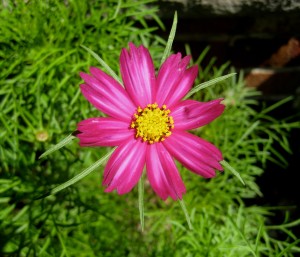The path of heart is the only formula for life worth pursuing. It is not something one waits for or works toward but something that one practices every day. The path of heart will never fail you for the path of heart knows no wrong turn. Everything along its winding way is necessary, important, and meaningful. It is with awareness, however, that the path of heart is finally revealed as such, but the truth is, there is no other path. You are already on your own path of heart. You just have to realize it.
Soulbyte for Monday June 22, 2015
Hatred is the result of ignorance and fear, such a powerful emotion. Like a volcano hatred erupts and yet it comes from the same place as love, from deep within. Turning down the volume on hatred allows the more powerful sounds of love to be heard, the lilting strains of another possibility. If more people actively sang songs of love the chorus of hate would soon be drowned out, for as powerful an emotion as hatred is love tops all.
Stir up some love today. Let it seep out into every thought, act, and emotion. Sing of love, even if you think you can’t, and become part of the changing world that really does need love, right now!
Soulbyte for Sunday June 21, 2015
A peaceful planet will only be a possibility when the non-peaceful no longer exists, when segregation, hatred, greed, and ugliness toward others are eradicated. Teach peace not war. Teach compassion. Teach love. Teach kindness. It’s that simple.
Yes, evil exists; it is a fact, but it will have no power if mankind disengages from it totally. Peace and love are powerful allies, engage in them instead. Do not only teach them but fully embody peace, love and total acceptance of all beings and the world will be a better place. Look not beyond the self to solve the problem, become the loving peaceful change you seek.
Soulbyte for Saturday June 20, 2015
To live a life of grace and humbleness is to live a life steeped in goodness of heart. What more than goodness of heart could you want? Goodness of heart fully expressing loving kindness to all beings, of course! And a wish that all beings may experience love and be loving as well, for there is not love enough expressed in the world, nor will there be peace until there is.

